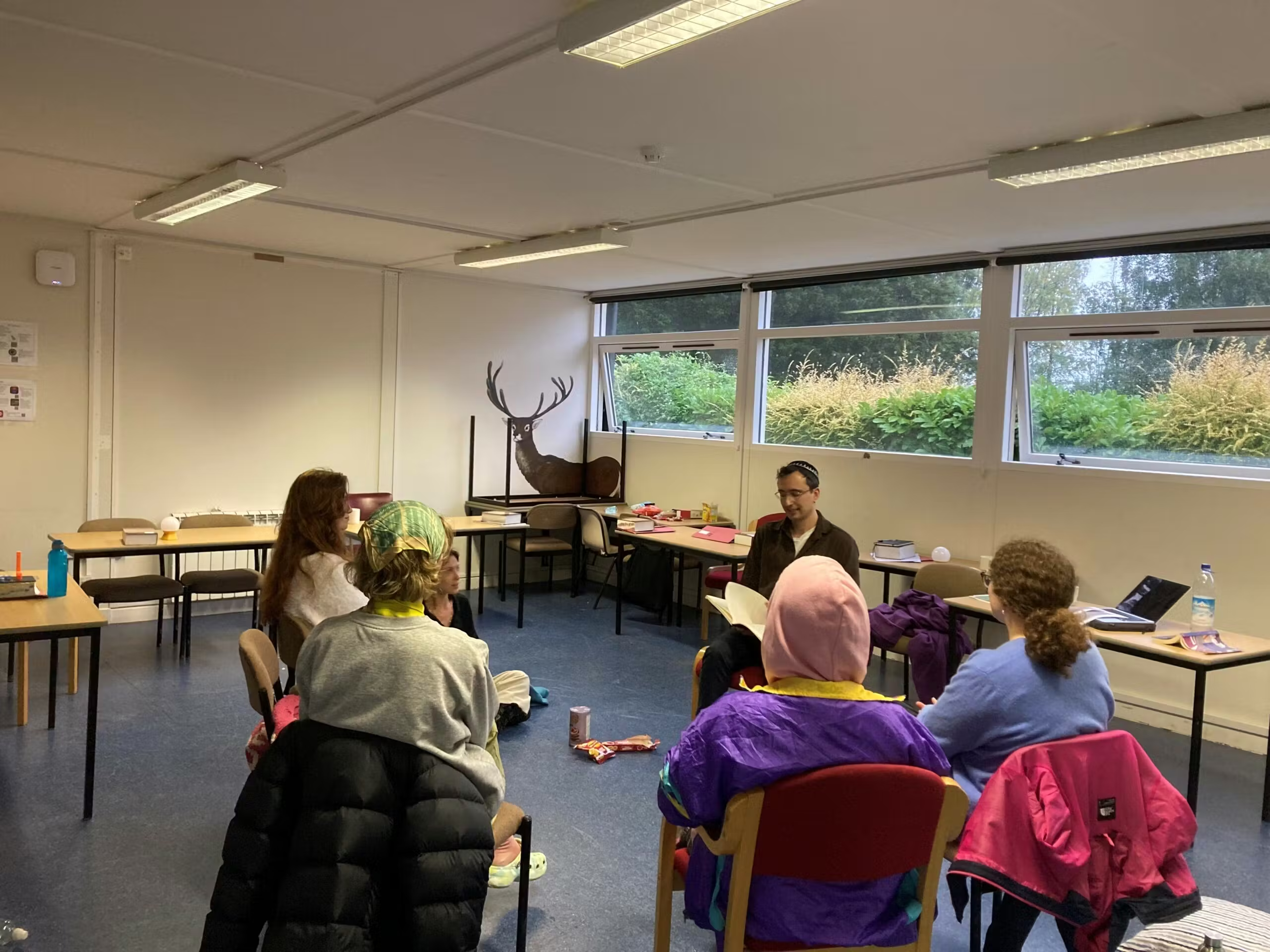Blog -Tom Hastings
Tom Hastings, Holocaust Centre North’s first writer-in-residence, reflects on a workshop he delivered at the Queer Yeshiva Summer Intensive on 27th August 2024, using materials from the Holocaust Centre North Archive.
During my time as writer in residence on the Memorial Gestures programme at Holocaust Centre North, I have been especially drawn to letters in the archive. It’s a strange thing, to find yourself reading a handwritten letter in an air-conditioned room that was intended for someone long past. The letter’s cursive irregular hand, the shifts from German into Yiddish, and references to private experience and shared acquaintances would have been familiar to the addressed recipient. For me, the strangeness of reading these things is a nearness and farness: far, because the sender and recipient are unknown to me; my reading German is still poor despite the language lessons, and shared references abound; near, as I have a mother of my own, and know what it is to receive letters – or in my case, emails – marked by care and worry.
On 27th August, I shared my experience of reading letters in the archive with a group of six participants. The workshop, titled “Letter Writing after The Shoah”, took place one evening during the Queer Yeshiva Summer Intensive in the Lake District. Over five days at the end of the summer, a group of approximately 90 queer Jews travelled to the North of England to study Talmud and to pray and sing together. What would induce someone to spend two evening hours attending a workshop on the Shoah, having spent a full day translating words from Biblical Hebrew and Aramaic and discussing them in chavruta (in pairs)? A few people came up to me at lunch and said that while the workshop sounded very interesting, they would prefer not to engage with the Shoah in that context. I’m certain that I would have felt the same in their place and am grateful to each one of the participants who did come to the workshop.

At the start of the session, we sat in a circle and each discussed our own connection to the Shoah. It transpired that the families of everyone there had been impacted by the Nazi genocide, and several participants had lost relatives in the camps. We were in a room of third generation survivors. I asked those gathered to stand and lay a hand on the shoulder of the person to their right. As the circle began to spontaneously ripple and sway, we continued to speak about letters – about their varied materiality, the issue of censorship, and the different ways in which lovers, friends, and relatives came to be separated by the Nazis. One person mentioned Christina Sharpe’s In the Wake: On Blackness and Being, a text which responds to representations of Black life in the aftermath of slavery. This led to a vital conversation about correspondences with the Shoah, and the need to think about violence by analogy, not least in the present. I was reminded of a conversation I’d had with a friend in Berlin, about Michael Rothberg’s Multidirectional Memory: Remembering the Holocaust in the Age of Decolonization, a book I came across again on the shelves of Holocaust Centre North’s learning room library. The swaying came to a natural end; we resumed our seats.
I shared two sets of letters written during the war years. The first was a correspondence between Felice Schragenheim, a German Jew, and her non-Jewish partner, Elisabeth Wust, that I had seen in the permanent collection at the Jewish Museum in Berlin. Shortly before she was deported in August 1944, Felice sent a series of vows in response to a homemade marriage contract sent to her by Elisabeth, signing her letter with a lipstick kiss. We considered the gesture of creating your own ceremony through letter writing at a time when the Nazi administration was producing more and more paperwork, and the way resistance – and in particular queer resistance – can take different forms.
We then turned to a series of letters in the archive at Holocaust Centre North that I have spent many weeks translating and reading closely. In 2003, Barry Anysz discovered a shoebox of letters after the death of his mother, Helga, and decided to donate them to the centre. Helga had arrived in the UK on a domestic servant visa at the start of 1939, while her mother, Else Lubranczyk, remained in West Berlin, where she worked as a seamstress and lived with her niece, Steffi Levy. Else and Steffi were deported to Theresienstadt in 1943 and murdered shortly afterwards.
We took turns reading aloud excerpts from Else’s and Steffi’s letters to Helga over a period from 1939 to 1942. A brother makes a short trip from Berlin, preparations for the Passover seder, desperate searches for paperwork to secure flight from the Third Reich – lines of a thick exchange of information carried on between mother and daughter. We registered the increasing desperation in Else’s sentences as she attempted to flee Germany with Steffi. One participant suggested that Else’s distress must have taken an unbearable toll on her daughter Helga, who was then making her way as a refugee in a foreign country. Reading the letters aloud brought home the experience of living through the Shoah, creating an emotional bond between those of us who were present. At the end of the workshop we left for the evening prayer, Maariv – a reminder that life continues.
I had intended to invite the participants to write their own letters in the second half of the workshop, yet it soon became clear that we would not have enough time. And so, I leave a prompt here.
Write a letter to a relative who lived during the Shoah, asking questions about their life. You might also want to describe the world in which you live to them.